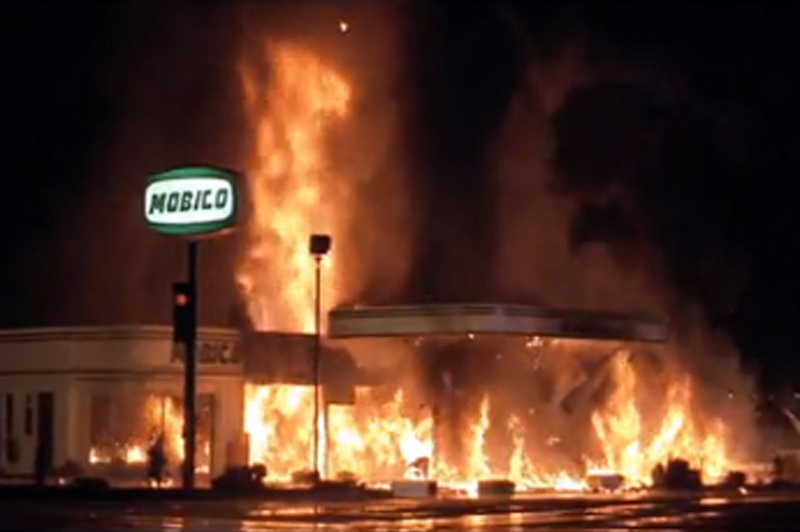
Andrew G. Fried
The game has changed when it comes to the dispute over whether Cemex will proceed with its plan to mine 56 million tons of aggregate from a site in Soledad Canyon just outside of Santa Clarita city limits.
That much, at least, has been assured by the dueling letters between Cemex and the Bureau of Land Management.
For the better part of two decades, local observers — including our organization, Safe Action for the Environment Inc. (SAFE) — have viewed the BLM and Cemex as being “simpatico” on the issue. Cemex possesses contracts that, once acted upon, allow for the development of a massive sand and gravel mine that would cause severe impacts on traffic, wildlife, air quality and a myriad of other environmental and quality-of-life issues.
The BLM, for its part, has been perfectly fine with that — as evidenced by the BLM’s support of the mine and opposition to legislative attempts to cancel the contracts.
But, with its letter last month to Cemex, in which the BLM hinted the contracts could be canceled because of what the BLM describes as inaction by Cemex, the BLM has triggered a fairly heated legal squabble with the Mexican multinational mining giant.
Cemex responded with a letter of its own — signed by an executive but clearly written with legal posturing in mind — taking issue with the BLM’s assertions and vowing to protect the company’s interests in Soledad Canyon.
For the past decade, and especially over the past seven years, the issue has focused on legislative attempts to cancel the mining contracts. For its part, Cemex struck a truce with the city of Santa Clarita, which opposes the mine, to allow time for a mutually agreeable legislative solution to be found.

The city-owned property where Cemex has federal mining rights.
While we at SAFE continue to oppose the mine, and we’d oppose any “solution” that allows the mine to go forward, we also believe it should be taken into account that Cemex has attempted in good faith to reach a mutually agreeable solution with the city and the community. During the “truce” between Cemex and the city, both sides have worked together to craft a legislative solution that preserves local quality of life while also compensating Cemex for the cancellation of the contracts.
They’ve nearly succeeded, and the work continues.
The BLM, during the city-Cemex truce, has dug in its heels and worked behind the scenes to block the attempts at a legislative solution. After all, two 10-year mining contracts could be just the beginning of a decades-long revenue stream for the BLM.
Now, with the apparent 180-degree turn the BLM has taken, the game has changed. The BLM is now in the position of having to negotiate with Cemex. No longer are the mining company and the BLM “simpatico.” Now, the BLM needs to be a player in reaching a solution that’s agreeable to all stakeholders.
How will this change the way the issue plays out? That remains to be seen, but what’s clear is that the BLM’s new position has altered the landscape, and in the process the BLM has brought some interesting questions to the forefront, including, among them, the question of whether the environmental studies performed for the planned mine are still valid after sitting on the shelf for nearly two decades.
As the BLM pointed out, much has changed in the intervening years, and since Cemex still needs to pursue and obtain entitlements from local, regional and state agencies, such issues could weigh on the outcome — or at least force Cemex to re-perform some aspects of the studies with an eye toward current environmental circumstances and standards.
In the months ahead, we at SAFE plan to break down some of those issues and share our views on them with the community. We hope this precipitates a renewed discussion among the public, who would be significantly affected by the mega-mine next door. We hope the community becomes increasingly aware of the fact that the mine is, by no means, a done deal.
The BLM and Cemex letters certainly demonstrate that.
Andrew Fried is president of Safe Action for the Environment Inc. For more information about SAFE and efforts to save Soledad Canyon, visit www.Safe4Environment.org.
Like this:
Like Loading...
Related






 Tweet This
Tweet This Facebook
Facebook Digg This
Digg This Bookmark
Bookmark Stumble
Stumble RSS
RSS










































REAL NAMES ONLY: All posters must use their real individual or business name. This applies equally to Twitter account holders who use a nickname.
4 Comments
Let them come
I am trying to figure out why you wrote this. The reversal of position by the BLM is a good thing in that it reduces the chances of Cemex ever being able to mine in the SCV. Anything that works toward that end, including your own efforts, is a good thing. I have no sympathy whatsoever for any financial problems that Cemex might experience – they are destroyers of the environment.
msc545, do you live in a home? do you drive on a street? ever attended a school or been inside of a building? those were all made with sand and gravel. Unless you live in a hermit’s cave, you can accuse CEMEX of being a “destroyer” of the environment, but you don’t get to pretend you’re not a hypocrite.
Can NARF or the local CA Indian Community make demands that the BLM land not be used for these purposes?